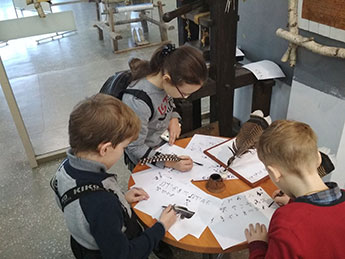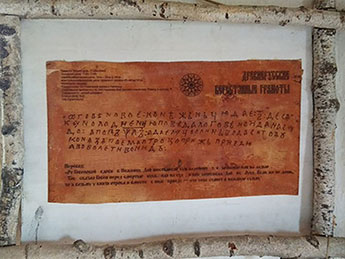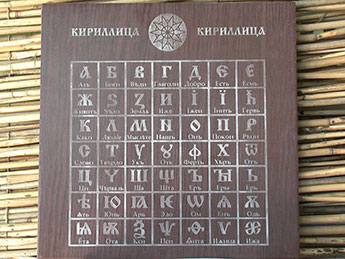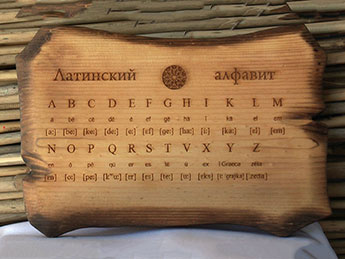The Belokurikha Museum reveals secrets of an ancient alphabet
Dobro (kindness), zhizn (life), zemlja (earth) — these are a few letters from the first Slavic alphabet, the Glagolitic script. It was created in the 9th century in Moravia, the modern Czech Republic, by brothers Cyril and Methodius. You can learn about the history of Russian writing in the museum of the same name in the village of Solonovka, 250 kilometers from Barnaul.
In ancient times, letters were not just used to represent sounds. The ancient Slavs’ view of the meaning of life and even their knowledge of astronomy were hidden in the complex forms of the letters.
Andrey Pokidaev, Director of the museum:
“The letter Zemlja (Earth) is very interesting. This is the planet, this is the axis, and this is its satellite. If we look at the same letter in the modern Russian alphabet, it looks like the number 3… And it is the third planet from the Sun.”
Later, the Cyrillic alphabet was developed. It’s the same alphabet rewritten to match the forms of the Greek letters. The names of the letters have remained the same, but the form has changed. The famous birch bark manuscripts were written in the Cyrillic script.
At the beginning of summer, a new valuable exhibit was added to the museum collection. Old Believers from the Chelyabinsk region performed church hymns according to this handwritten book. The symbols above the letters are “hooks”. In ancient times, the Russians “sang the hooks”. They were used instead of notes to indicate the pitch. This tradition came from Byzantium.
The book is written in the Old Russian ustav script.
Andrey Pokidaev, Director of the museum:
“The letters are very straight. And look, how many parameters are given. There are slopes and angles for every little letter. It looks like a blueprint of a spaceship or something… And each letter adheres to the Golden ratio.”
After the revolution of 1917, the names and forms of the letters were simplified in line with the communist regime. The original meanings were forgotten over time.
Source: ntdtv.ru
The museum is a member of the Association of Private and People’s Museums of Russia.
Address: Altai Krai, Belokurikha, Sadovaya st., Building 37k1
Tel.: +7 (983) 354-96-23
E-mail: a.pokidaev@mail.ru
Operating hours: 9 AM to 6 PM daily
Ticket price: Guided tours — 100-700 rubles. Workshops – 150-550 rubles.
Before planning your visit, please contact us via the ways mentioned above to learn about current ticket prices and details of the visit under the COVID restrictions in the region.
Calligraphy — the written beauty of feelings.







